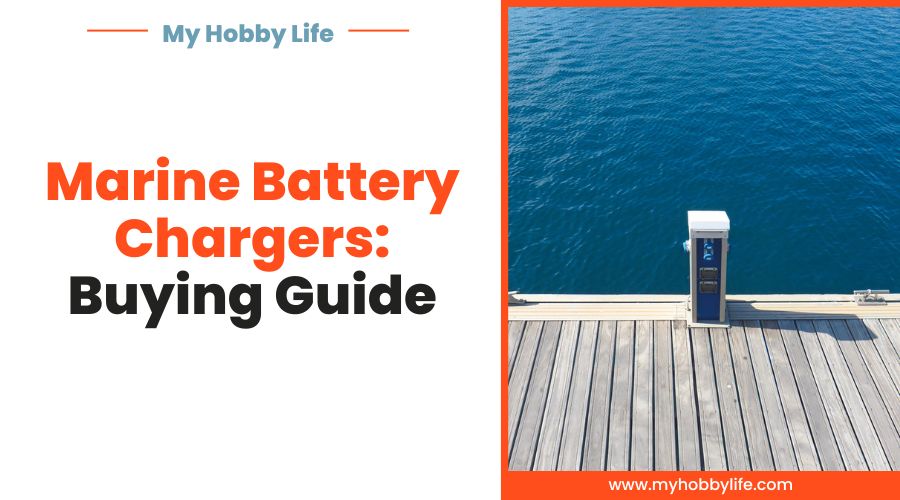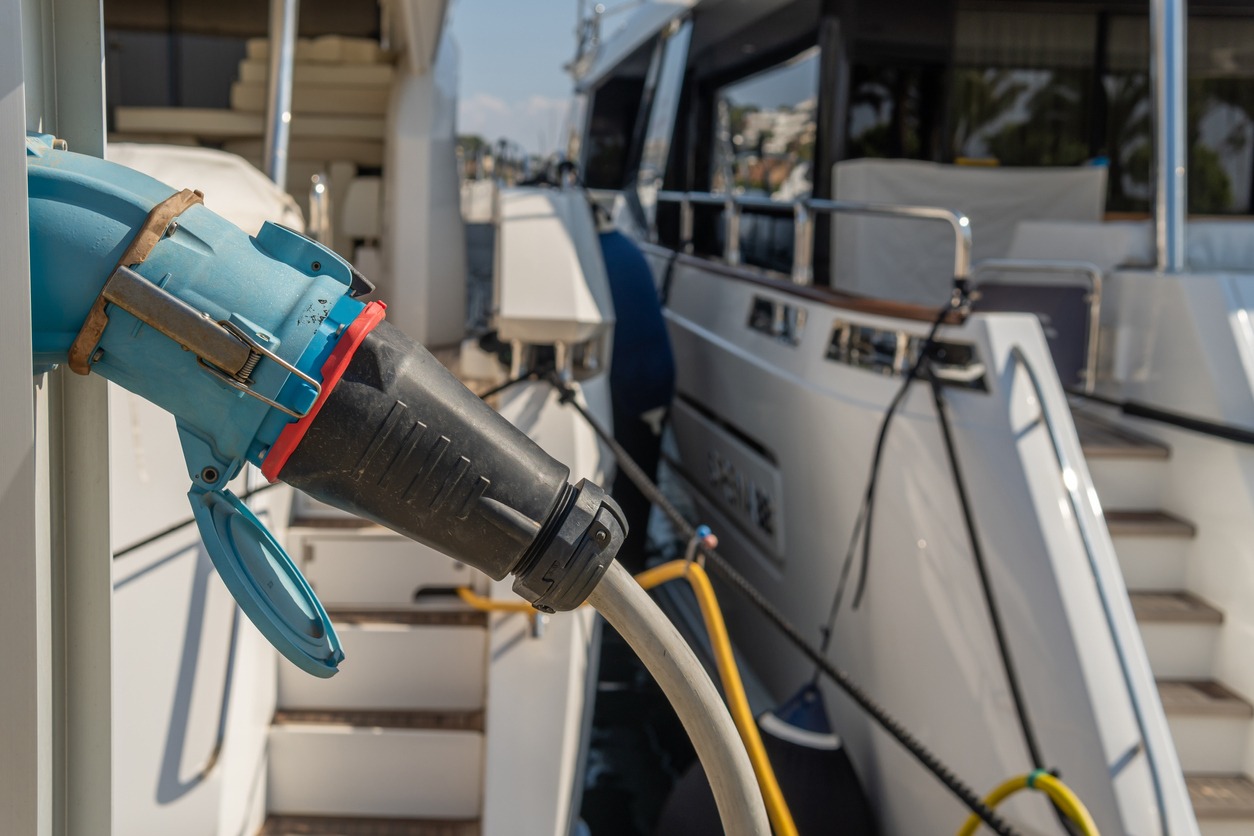Have you ever experienced a dying battery while boating? I guess you had been frustrated and annoyed for a while.
Batteries are an essential element on board boats. But to properly operate, batteries need a battery charger. For instance, batteries that do not have enough power to start the engine will need a battery charger that can provide a good amount of amperage to your battery. Also, after a certain amount of use, the energy level contained in the battery is discharged, and you need to recharge it. It is where the battery charger comes in.
Moreover, the performance of a marine battery comes with the brand and features of the marine battery charger. Thus, having a high-performance marine battery charger is also essential as having the best and high-quality battery. The best marine chargers can charge the marine battery multiple times and protect it from wear and tear. That is why they are as important as the batteries themselves.
But how can you identify the best marine charger for your boat battery? Here is a guide when choosing the best marine battery chargers.
Battery type
Before you select a marine battery charger, know what type of battery you have and the specs. Find out the type, amp per hour, and input voltage. For example, a sealed AGM battery has different properties to a flooded lead acid battery, and a gel battery will not be the same as a Lithium Ion unit.
Thus, knowing those distinctions early on can lead to the best battery charger because the wrong charger could ruin your battery. Then, after you develop a good understanding of these things, choosing a charger is no longer a complex endeavor.
Power
Voltage refers to the electric potential between two points, whereas amperage expresses the strength of the electrical current. So, when searching for the best marine battery charger available, first consider the specifications of your boat’s power supply. The size of the appropriate battery charger is directly related to your battery’s voltage and supply voltage.
Boats utilize different types and multiple batteries simultaneously, so your charging requirements must meet the load-specific criteria for each kind of battery. Get a charger that delivers the voltage required by your battery. Most marine batteries are 12V. So, if your boat has a 12v battery, you will need a 12v charger. It is essential to keep in mind that there are no shortcuts when it comes to recharging your marine battery. If you will use a 24v charger on a 12v battery, you will wind up destroying it and could potentially cause a fire.
Another thing to remember is to connect multiple batteries in parallel, not in series. Charging multiple marine batteries in series can cause a reduction in battery life due to unbalanced charge cycles.
Safety & Lifespan
Electronic products should withstand salt spray and is safe from the marine environment. There are marine battery chargers that are epoxy-filled and constructed. Thus, they are safe from water damage. Whatever brand consumers choose, at least look for marine battery chargers capable of preventing potential shocks outside the battery charger and addressing sparkling-related vulnerabilities.
In addition, the charger must charge different types of batteries with dedicated charging settings. Be aware, for example, that not all chargers offer settings for lithium batteries.
One more thing, marine battery chargers should comply with safety features like ABYC safety standards.
Battery Bank
The three-bank battery chargers are commonly used on boats, yachts, electric vehicles, and off-the-grid because they can charge multiple batteries. Most onboard battery chargers are designed to be permanently connected to the batteries, which are then charged whenever the battery charger is plugged into the main power.
In addition, a typical dual-bank, the 20-amp charger has a 10/10 per leg configuration. That is, each output is capped at 10 amps maximum. But if a boat has one small starter-cranking battery and a larger house battery, they will not discharge at the same rate. A 10/10-amp charger will likely waste one leg’s 10-amp power in idle because the cranking battery charges quickly.
On the other hand, choosing the best suited to your battery bank will consist of taking between 10 and 20% of the capacity of the service batteries to define the charger’s power. For example, if the service battery has a capacity of 200Ah, you will need a battery charger of 20 to 40 amps maximum. The standard marine battery will not accept more than 25% of its capacity.
Charge Rate
Poor-quality chargers tend to reduce their charging capacity as the temperature rises. Many chargers lose output power (amps) as they heat up. For example, a 20-amp charger puts out 20 amps at first, but after 30 or 40 minutes into a recharge cycle, it gets warm and drops to 14 amps or lower. That would make it a 20A peak, 14A consistent charger.
Therefore, choose battery chargers that remain efficient beyond 50 or even 60°. A 20A-rated charger consistently maintains 20 amps of output or close to that, so batteries recharge faster.
Noise
Be aware that some chargers have a ventilation system that is more or less noisy. On a sailboat, it is better to choose a silent charger to preserve comfort on board.
Reputation
Choose a reference brand that has proven itself. You may ask a friend, a relative, or a family member about the performance of their marine battery charger. You can also read articles and reviews regarding marine battery chargers like this one.
Budget
Boating is an expensive pastime, and there are many places where you can cut corners and save money, but this is not one of them. Batteries are expensive, and replacing them because they have died is not a good experience. It is far better to invest in the best charger you can afford and take care of those batteries.
Also, you can look for a battery charger that you can use for more than marine applications. A charger that you can also use to charge your car, motorcycle, or ATV battery will be worthwhile.
How often should you recharge your batteries?
During the summer months, or at least when boats are used regularly, it is better to recharge your service batteries when you are back at the marina. The real problem in terms of charging frequency is during the winter period when the batteries remain unused for long periods.
It is a fact for batteries that when not used they naturally discharge. It is called self-discharge. The rate of self-discharge of a battery depends on its quality. A standard boat battery can be self-discharged by 5% each month. For a boat wintered on land for many months, with a self-discharge rate of 5% per month, charging may fail to restore at its full capacity. It is the reason why use a battery charger during the wintering period.
Regularly charging your batteries can last 3 to 4 years. If you leave your batteries inactive during the winter period without recharging them, you can end up with a dead battery after one season.
In conclusion, having a marine battery charger onboard is a wise idea if you rely on battery power. It means meeting the demands of enjoying marine leisure and sports. Even after the longest day out on the water, a charger can recharge your battery and keep it in shape until your next voyage.


